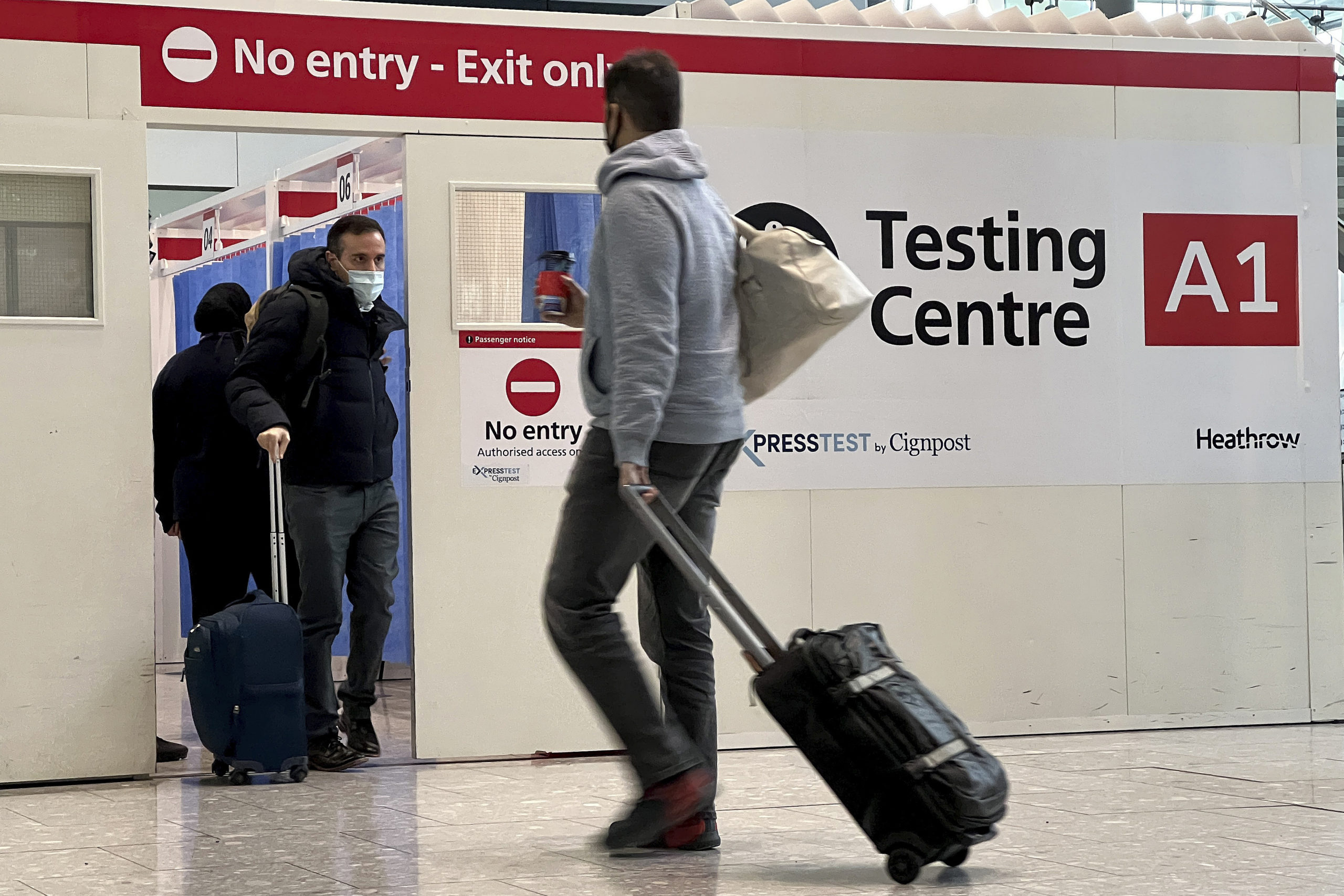WASHINGTON (AP) — The Biden administration is lifting its requirement that international travelers test negative for COVID-19 within a day before boarding a flight to the United States, ending one of the last remaining government mandates designed to contain the spread of the coronavirus.
The Centers for Disease Control and Prevention announced Friday that the requirement will end early Sunday morning. The health agency said it will continue to monitor state of the pandemic and will reassess the need for a testing requirement if the situation changes.
“This step is possible because of the progress we’ve made in our fight against COVID-19,” said U.S. Health Secretary Xavier Becerra.
Airline and tourism groups have been pressing the administration for months to eliminate the testing requirement, saying it discourages people from booking international trips because they could be stranded overseas if they contract the virus on their trip.
Roger Dow, president of the U.S. Travel Association, called lifting the testing rule “another huge step forward for the recovery of inbound air travel and the return of international travel to the United States.”
Airlines argued that the rule was put into effect when few Americans were vaccinated — now 71% of those 5 and older are fully vaccinated, according to CDC figures. They also complained that people entering the U.S. at land borders are not required to test negative for COVID-19, although they must show proof of vaccination.
While domestic U.S. travel has returned nearly to pre-pandemic levels, international travel — which is very lucrative for the airlines — has continued to lag. In May, U.S. international air travel remained 24% below 2019 levels, with declines among both U.S. and foreign citizens, according to trade group Airlines for America.
Many other countries have lifted their testing requirements for fully vaccinated and boosted travelers in a bid to increase tourism.
Some infectious-disease experts said they were comfortable with the CDC’s decision, and that lifting the restriction is unlikely to cause further spread of the virus in the U.S.
Dr. William Schaffner of Vanderbilt University said the rule was designed to prevent importing the virus, “but we’ve got plenty of COVID here. It’s like telling someone not to pour a bucket of water in their swimming pool.”
Dr. Peter Chin-Hong at the University of California, San Francisco, said travel restrictions demonstrate that officials are trying to keep variants out, “but they haven’t really shown to be beneficial, ever.” However, he said, requiring foreign visitors to be vaccinated makes sense to avoid straining the U.S. health-care system with people who could develop severe disease.
The requirement for a negative COVID-19 test before flying to the U.S. dates to January 2021 and is the most visible remaining U.S. travel restriction of the pandemic era.
In April, a federal judge in Florida struck down a requirement that passengers wear masks on planes and public transportation, saying that the CDC had exceeded its authority. The Biden administration is appealing that ruling, saying it aims to protect the CDC’s ability to respond to future health emergencies.
The Biden administration put the testing requirement in place as it moved away from rules that banned nonessential travel from dozens of countries — most of Europe, China, Brazil, South Africa, India and Iran — and focused instead on classifying individuals by the risk they pose to others. It was coupled with a requirement that foreign, non-immigrant adults traveling to the United States need to be fully vaccinated, with only limited exceptions.
The initial mandate allowed those who were fully vaccinated to show proof of a negative test within three days of travel, while unvaccinated people had to present a test taken within one day of travel.
In November, as the highly transmissible omicron variant swept the world, the Biden administration toughened the requirement and required all travelers — regardless of vaccination status — to test negative within a day of travel to the U.S.
In February, travel groups argued that the testing requirement was obsolete because of the high number of omicron cases already in every state, higher vaccinations rates and new treatments for the virus.
Meanwhile, travelers found creative ways around the rule. This spring, several Canadian teams in the National Hockey League flew to cities near the border, then took buses into the U.S. to avoid the risk of losing players who tested positive.
U.S. airlines estimate that dropping the test requirement will mean 4.3 million more passengers in one year.
It is unclear, however, whether airlines can boost flights quickly enough to handle that kind of increase. Airlines facing a shortage of pilots have already scaled back their original schedules for the peak summer vacation season.
Brett Snyder, a travel adviser who writes about the industry at CrankyFlier.com, said the requirement has caused some people to postpone international travel.
“It’s not that they are afraid of getting sick, they don’t want to get stuck,” Snyder said. He thinks there will now be a surge in booking those trips, “which, if anything, will lead to higher fares.”
Hotels, theme parks and other travel businesses also lobbied the administration to drop the rule.
“The whole industry has been waiting for this announcement,” said Martin Ferguson, a spokesman for American Express Global Business Travel, which advises companies on travel policy. He said there are few remaining pandemic policies that cause so much consternation for the travel sector, with China’s “zero-COVID” restrictions being another.
Despite ending the testing requirement, the CDC said it still recommends COVID-19 testing prior to air travel of any kind as a safety precaution.
___
___
Koenig reported from Dallas. AP Medical Reporter Mike Stobbe in New York contributed to this report.

